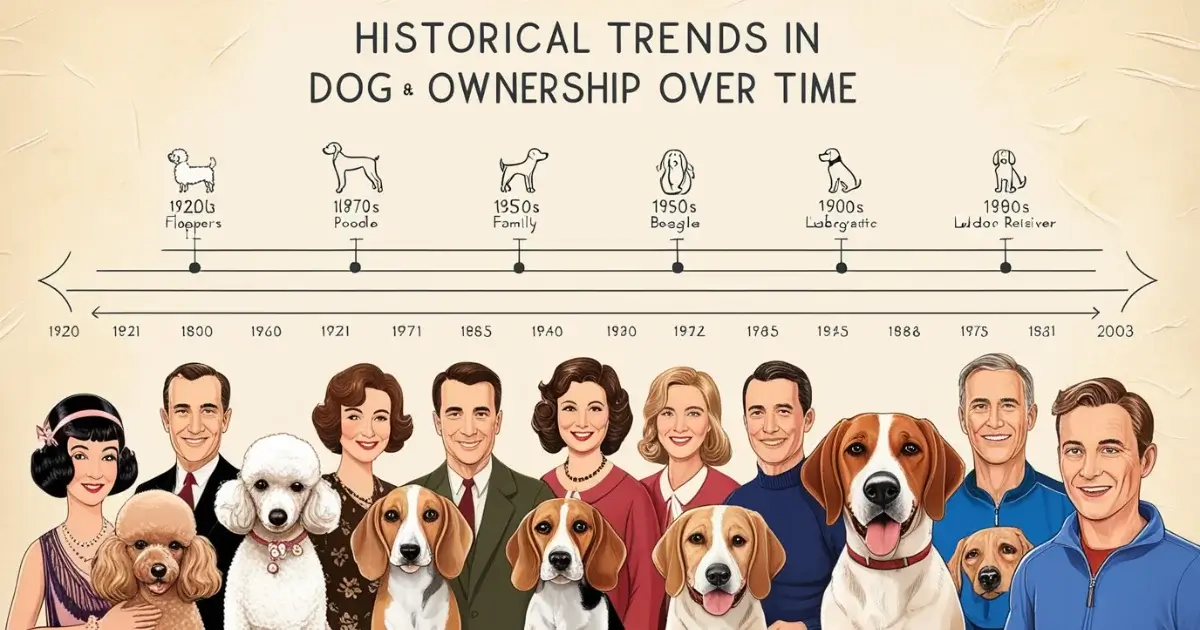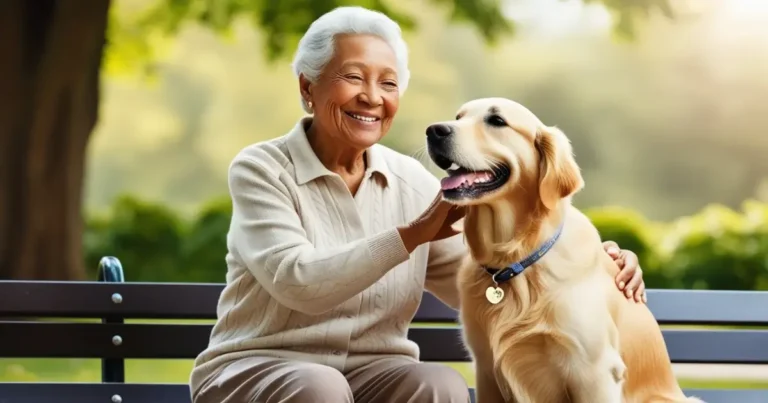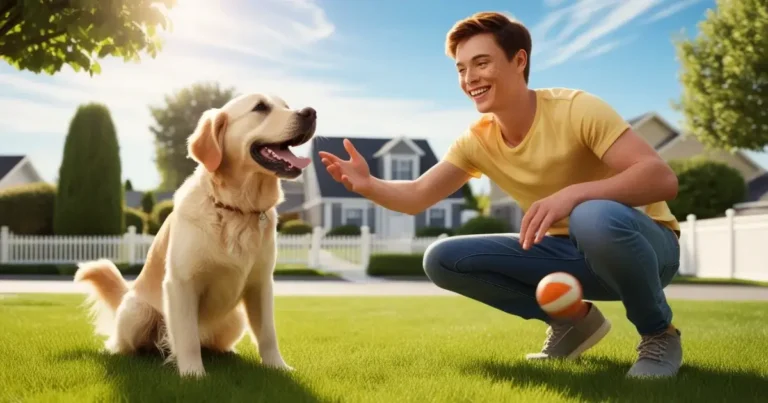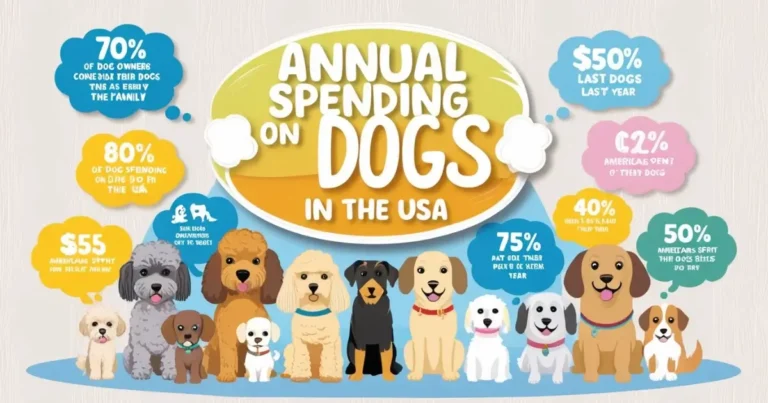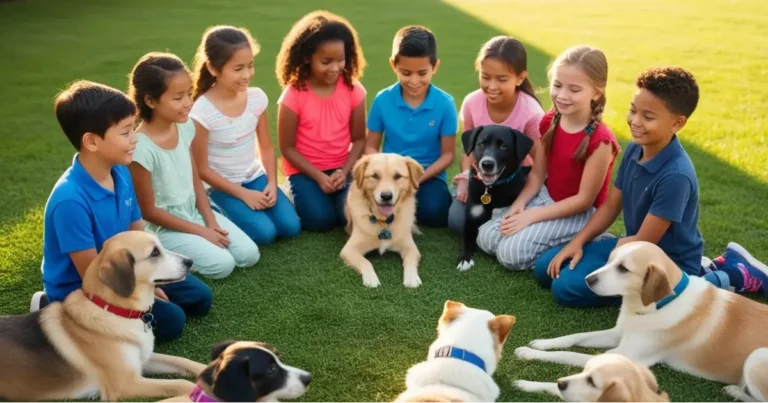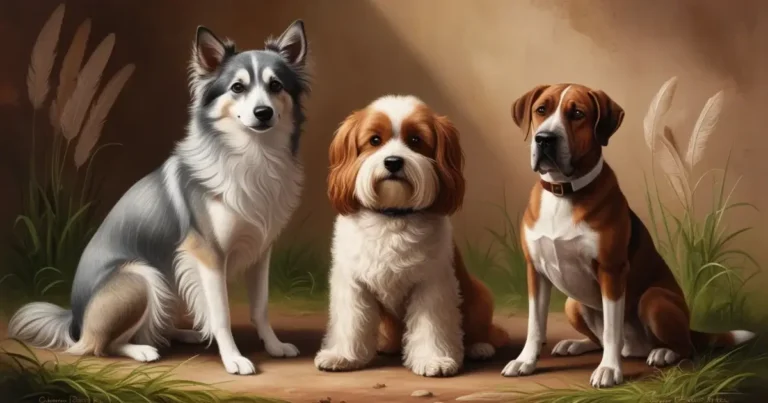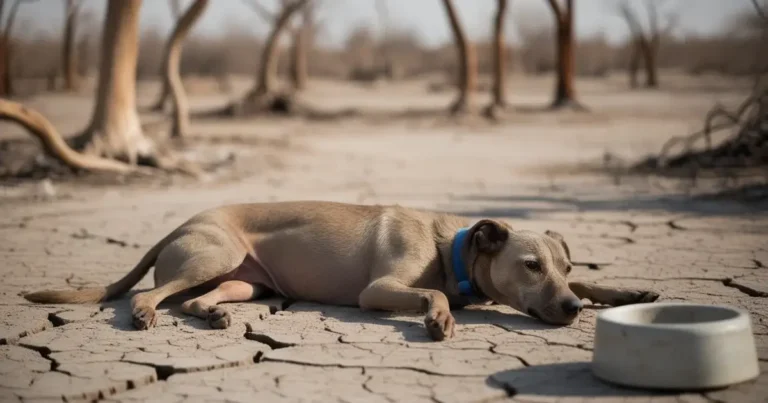Historical Trends in Dog Ownership: A Heartwarming Journey
Dogs have been part of human life for thousands of years. From their early roles as hunters and guards to becoming cherished family members, their journey reflects a close bond with humanity. Exploring historical trends in dog ownership reveals how this relationship has evolved across different eras.
Table of Contents
Early Human and Dog Relationships: The Beginnings
Prehistoric Communities and Wolves
The connection between humans and dogs began over 12,000 years ago. Early humans domesticated wolves for survival. These animals helped with hunting and guarding. Wolves that displayed loyalty were cared for and trained.
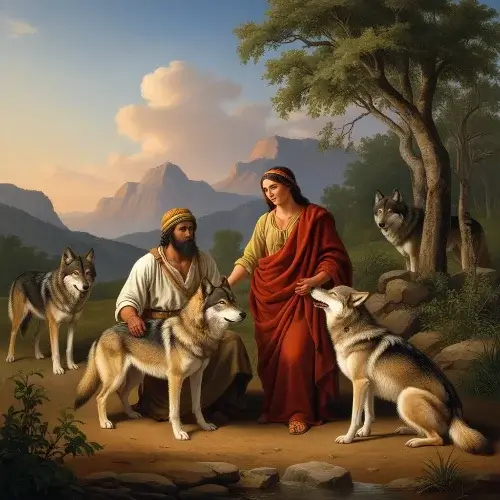
Archaeological findings support this bond. In Northern Israel, a Paleolithic tomb was found where a human was buried with a dog-like pup. This evidence highlights the early emotional connection humans had with dogs. Such data forms the backbone of historical dog ownership data.
Early Roles of Dogs in Nomadic Societies
As humans moved across lands, dogs became protectors. They guarded camps from predators and secured food supplies. Dogs also helped humans track and hunt prey. These roles were vital for survival. Over time, this mutual dependence strengthened the human-dog bond.
Dogs in Ancient Civilizations: Guardians, Symbols, and Companions
The Symbolic Role of Dogs in Ancient Cultures
In ancient Egypt, dogs were symbols of loyalty. They often appeared in artwork and were buried with their owners. Egyptians believed dogs could guide souls to the afterlife.
The Greeks revered dogs for their spiritual significance. They were considered protectors against evil. In healing temples, dogs were believed to have therapeutic powers. These practices demonstrate the respect and affection early cultures had for dogs. Such examples enrich historical dog ownership data.
The Functional Role of Dogs in Settled Societies
With the rise of farming, dogs took on new responsibilities. They guarded homes and herded livestock. Farmers bred dogs for specific tasks, leading to the emergence of distinct breeds.
This period saw changes in dog breed popularity, with breeds like mastiffs for protection and herding dogs for farm work becoming common. These changes laid the foundation for modern breed diversity.
The Middle Ages: Dogs as Companions and Status Symbols
Dogs in European Aristocracy
In medieval Europe, dogs became a symbol of wealth and power. Noble families kept lapdogs for companionship. Hunting breeds like greyhounds were also popular among the aristocracy.
The growth of dog ownership globally expanded as dogs accompanied explorers and traders to new lands. Their roles in hunting, protection, and companionship were widely recognized.
The Church’s Influence on Dog Ownership
Religious institutions had a mixed view of dogs. The Church discouraged pet ownership, associating it with wastefulness. During witch trials, dogs were often linked to accused witches, further stigmatizing them.
Despite this, many still kept dogs for protection and companionship, reflecting their importance in human life.
The Victorian Era: The Birth of Modern Pet Keeping
The Formalization of Dog Breeds
The Victorian era brought significant changes to dog ownership. People began formalizing breeds, focusing on specific traits. The first dog shows were held, and the Kennel Club was established.
These developments marked major changes in dog breed popularity, as breed standards were created and maintained. This period shaped the way we view dog breeds today.
Dogs as Companions for the Middle Class
During this time, middle-class families embraced pet ownership. Victorians believed owning a dog showed moral character and compassion. Dogs became symbols of family values and emotional support.
This era marked a shift where dogs were no longer seen as just tools but as beloved companions.
The 20th Century to Present: Dogs as Family Members
The Therapeutic Role of Dogs
In the 20th century, dogs began to play a more significant role in human health. Therapy and guide dogs became common. They supported people with disabilities and provided emotional comfort.
This shift highlighted the growth of dog ownership globally, as more people recognized the benefits of having dogs in their lives.
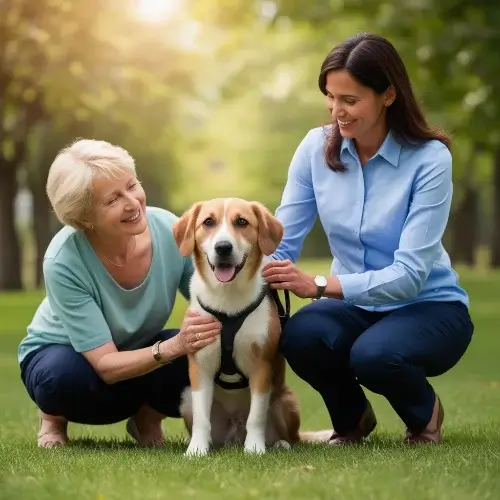
Modern Trends and Future Projections
Today, dogs are seen as part of the family. Media influences breed popularity. For instance, Huskies gained fame after Game of Thrones. However, this also led to a rise in abandoned Huskies when owners couldn’t meet their needs.
Looking ahead, future projections for pet ownership suggest positive trends. Rescue dogs are becoming more popular. Designer breeds and sustainable pet care practices are on the rise. These changes reflect a deeper understanding of dogs’ emotional and social importance.
Summary of Key Developments
| Era | Significant Developments |
| Prehistoric Times | Domestication of wolves for hunting and guarding. |
| Ancient Civilizations | Dogs as spiritual symbols and functional companions. |
| Middle Ages | Dogs as status symbols and hunting partners; stigmatization by the Church. |
| Victorian Era | Formalization of breeds; growing middle-class pet ownership. |
| Modern Times | Therapy dogs, rescue trends, and sustainable pet care practices. |
Conclusion: The Evolution of Dogs in Human Lives
The historical trends in dog ownership show how dogs have grown from working animals to family members. They’ve helped us survive, protected our homes, and brought joy to countless lives.
Today, dogs continue to play a central role in our lives. Their journey with humans is a testament to trust and loyalty—a bond that grows stronger with time.
FAQs
How has the growth of dog ownership globally influenced breed diversity?
Global dog ownership expanded as breeds adapted to different cultural and functional needs. For example, lapdogs became popular in Europe’s aristocracy, while herding breeds like Border Collies thrived in farming societies. This growth boosted breed diversity worldwide.
What are some key factors driving changes in dog breed popularity?
Media, lifestyle changes, and functional needs influence breed trends. For instance, Huskies surged in popularity after Game of Thrones, while designer breeds and rescue dogs are gaining attention due to changing social values and sustainable pet care trends.
How do future projections for pet ownership shape the role of dogs today?
Future trends indicate a focus on sustainable pet care, increased adoption of rescue dogs, and growing demand for therapy animals. These shifts highlight the evolving emotional and social roles of dogs in modern households.
Why did dog ownership become widespread during the Victorian era?
The Victorian era saw middle-class families embracing dog ownership as a sign of moral values and emotional support. Formalized dog breeds and dog shows also played a major role in popularizing pets during this period.
